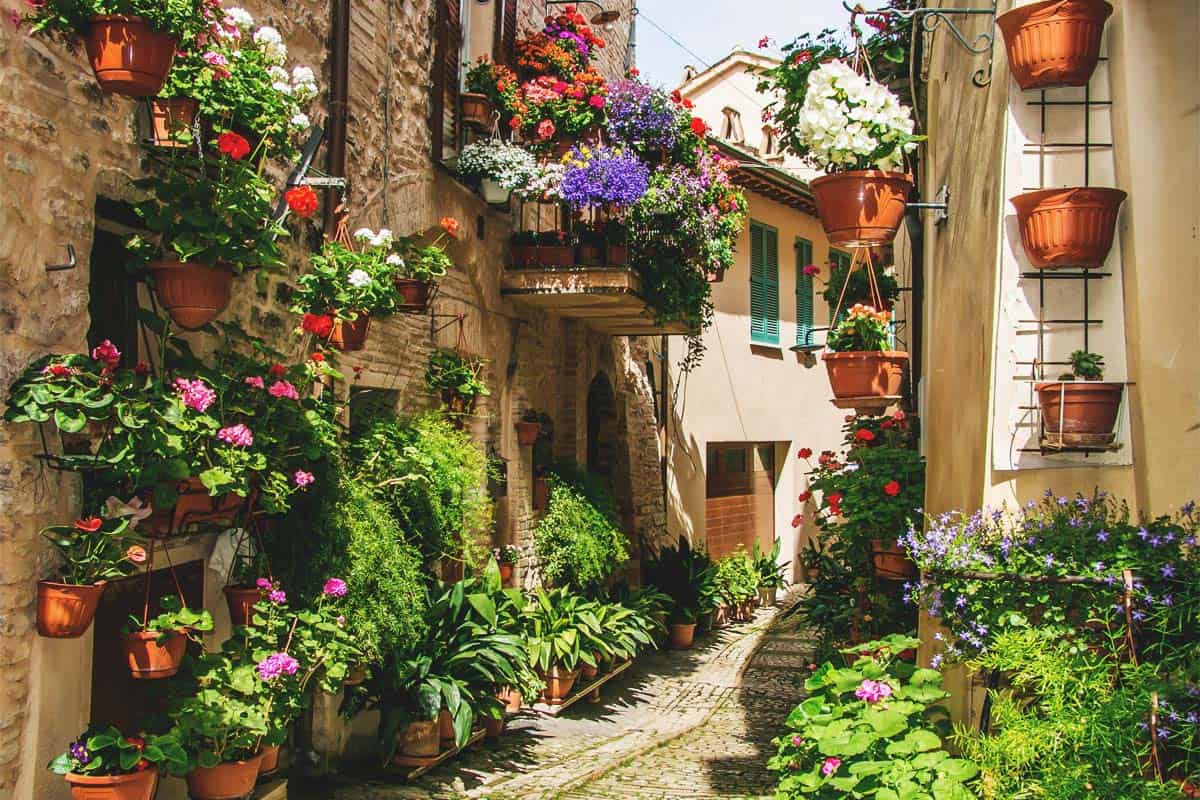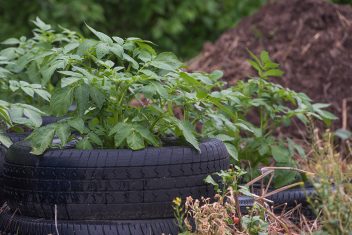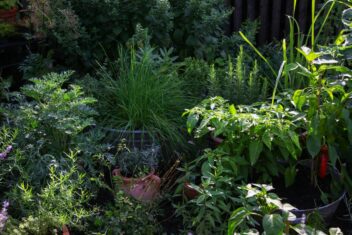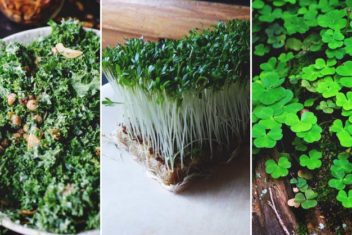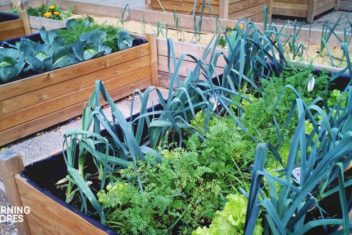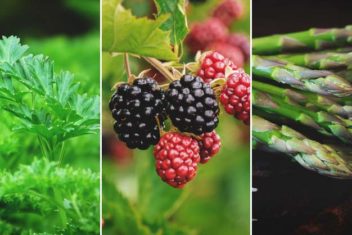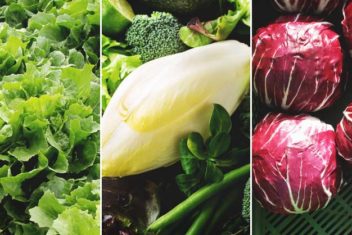My love of gardening began on a trip to France many years ago. That was the first time I realized that some people treated gardening as a pleasure rather than a chore. The French gardeners I met weren’t just keeping shrubs trimmed and relentlessly mowing the lawn the way we did back home. They were cultivating relationships with beloved plants and the landscape around them in their stunningly beautiful French gardens.
Since then, there’s been a huge resurgence in gardening for pleasure all over the US. So, it’s become much more common to see people outside enjoying spending time in their gardens. But, even after all these years, I still find the French style of gardening alluringly beautiful.
If you also love the French gardening style and are looking for ways to incorporate some of that influence in your garden, here are some ideas that work well even on a hardworking homestead!
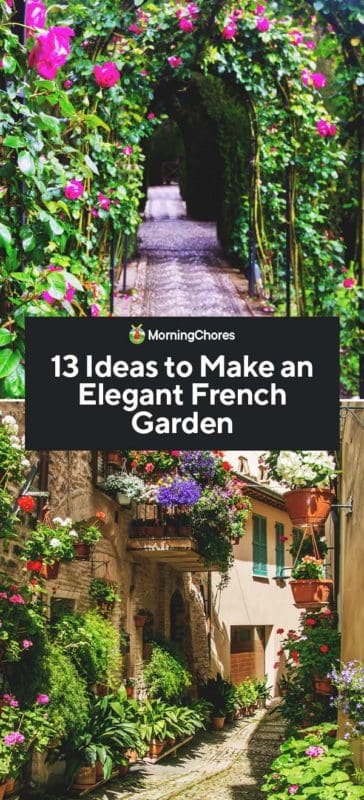
The Walled French Garden
Many of the fancy French gardens started out as monasteries. Those gardens, located inside the monastery walls, were visions of order and organization meant to reflect a reverence for mundane activities like growing food.
The walls also provided a physical barrier of separation between those living the monastic life and those living in the world. They gave the people inside the freedom and privacy to live a life of greater self-sufficiency and dependence on God.
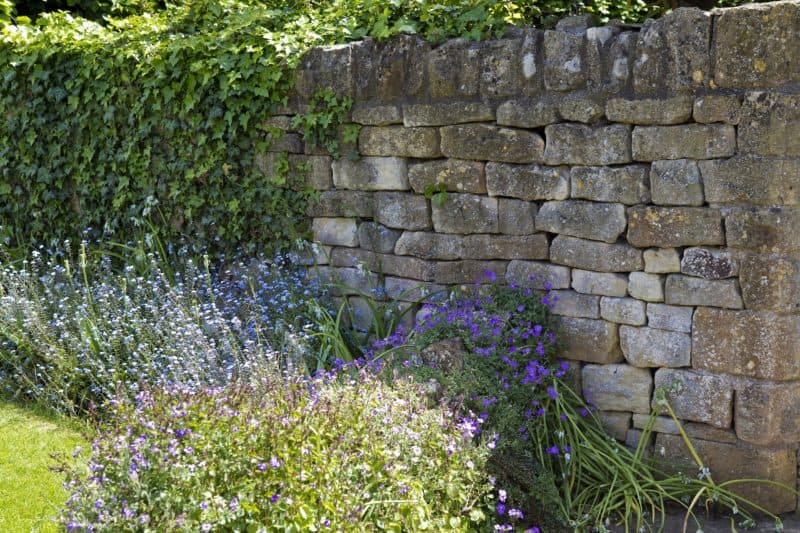
Yet, the walls were also a wonderful feature when it came to gardening. Those walls created microclimates by protecting garden areas from wind and adding warmth to extend the season by acting as a heat sink. They also deterred pests from entering the garden.
I don’t know about you, but in many ways, my life as a homesteader resembles old-fashioned monastic life. I haven’t taken a vow of celibacy. But I do make my own wine, hold nature in high esteem, and have much greater independence from outside supply chains than your average grocery store shopper.
1. The Wall Effect
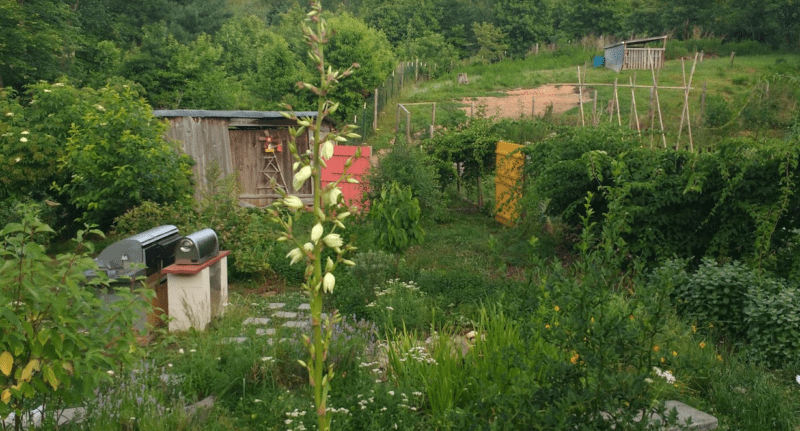
Even if you can’t find the time to build a stone wall, you can create that same sense of privacy and protection using less expensive fencing. Then, train some vigorously growing vines onto your fences to create a more substantial feel.
Hops and cold-hardy kiwi are two of my favorite vines to grow over fences. For kiwi, just make sure you also have strong staking support to withstand the weight of the fruit (after year 4-5).
2. Raised Beds
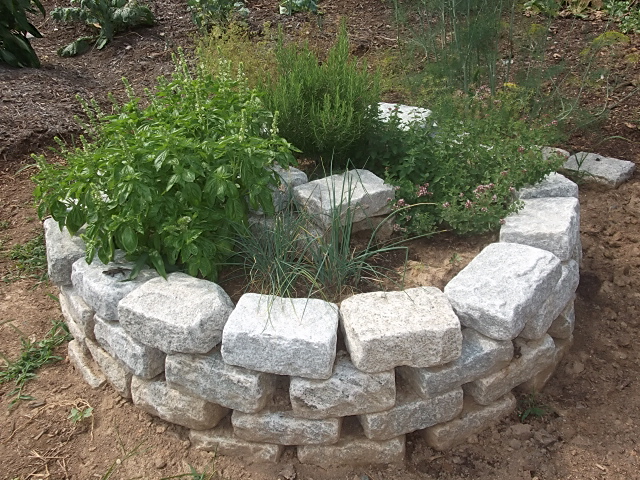
You can also scale down your stone wall idea to a stone bed. You won’t get the same microclimate benefits of a full wall. Yet, a stone or concrete base will provide insulation and a nice heat sink so that raised beds warm faster in winter.
Those built beds also help you have more control over nature by making for easier weeding. Plus, their durability makes them less work in the long term than wooden beds that break down quickly.
3. Espaliered Trees
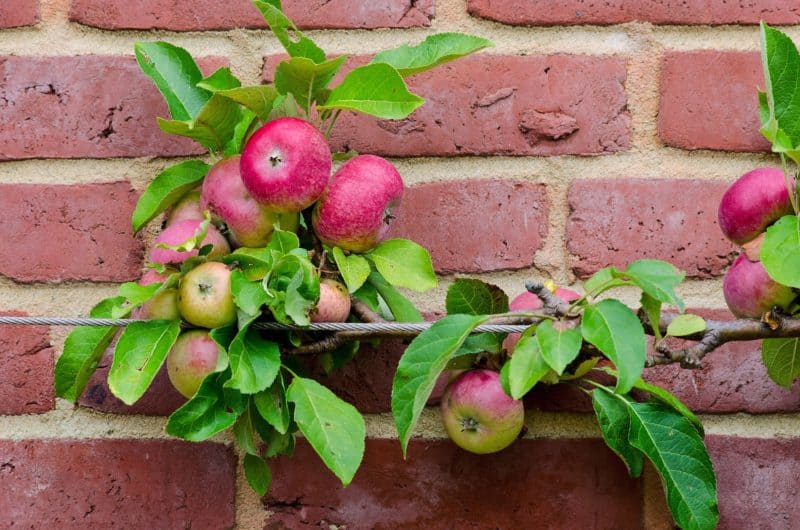
Another way to create the impression of a wall without actually building one is to use espalier techniques to train your trees to look like walls. Espaliered fruit trees are trained similar to grapevines to stretch their arm like branches in a straight line rather than in a vase or central leader format.
You can espalier just about any fruit tree. However, for best results, you’ll want to start with spur-type fruit trees. These trees produce fruits close to the branch. The branches are also more uniformly thick for their whole length to better support heavy fruit-bearing.
The branches can be bent at a 90° angle and grown out about 8 feet long on either side to create the panels of your wall. You will need to stake and support branches for the first couple of years. But as they mature, the branches become sturdier and self-supporting.
The Grand Entrance to Your French Garden
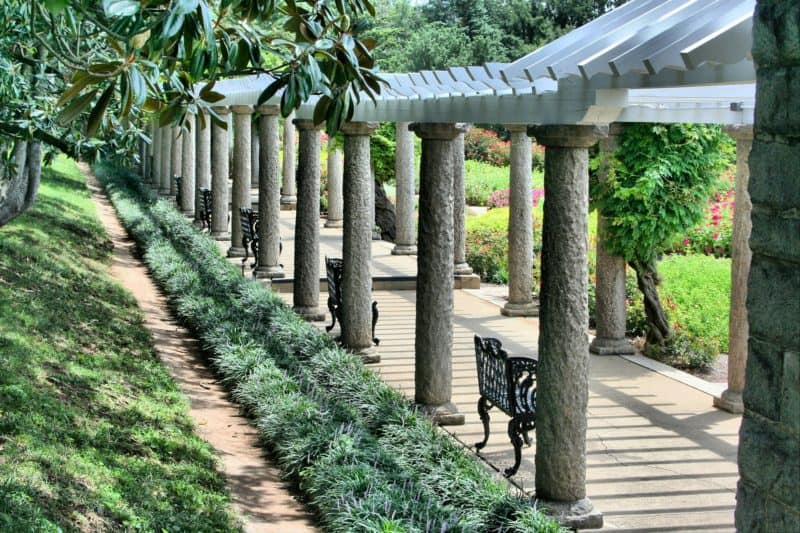
Another trend I’ve noticed with French gardens is that even when there’s no wall, even wide open-spaces will have an obvious entry point. It might be an arbor covered with flowers leading to a path lined with lavender.
There may be a mowed clearing through a small meadow. Or perhaps there are a few collected pots set on either side to create the impression of a path. No matter how it is achieved, the sensation of entering the garden is unquestionable.
Let’s face it, homestead gardens are often so productive that they sometimes look like a chaotic weedy mess. I’ve had people walk all over my medicinal herbs simply since they didn’t realize they were in the garden.
Creating a grand entrance not only makes your garden more beautiful, but it can protect your soil and plants by helping visitors mind where they step. For example, you can mark entrances with matched fruit trees on either side.
4. Grouped Fruit Trees
Elderberries are fast-growing. Also, their arched, bushing habit makes them a natural choice for a marking an entrance.
Hazelnut trees have similar impact and they are stunning in winter when their catkins hang like gold ornaments on the branches. Persimmon or dwarf plums also have a lovely growing habit that adds a bit of architectural direction.
5. Pawpaws for Pollination
Since it’s recommended that you plant six pawpaws in close proximity for cross-pollination, increase fruit production by using them as your garden entrance markers. Plant them in two neat rows with space to walk down the center. Or plant them in clusters of three on either side.
6. Herbs and More
You could also line a wider pathway leading up to the garden with easy to grow herbs such as chives, mints, lavender, or rosemary. Or, perhaps you can use your most showy medicinal or edible flowering plants like echinacea, sunflowers, or amaranth in large groupings at the start of your garden.
Whichever plants you choose to use, careful and impactful placement is the key to giving the impression of a grand entrance.
Classy Courtyards
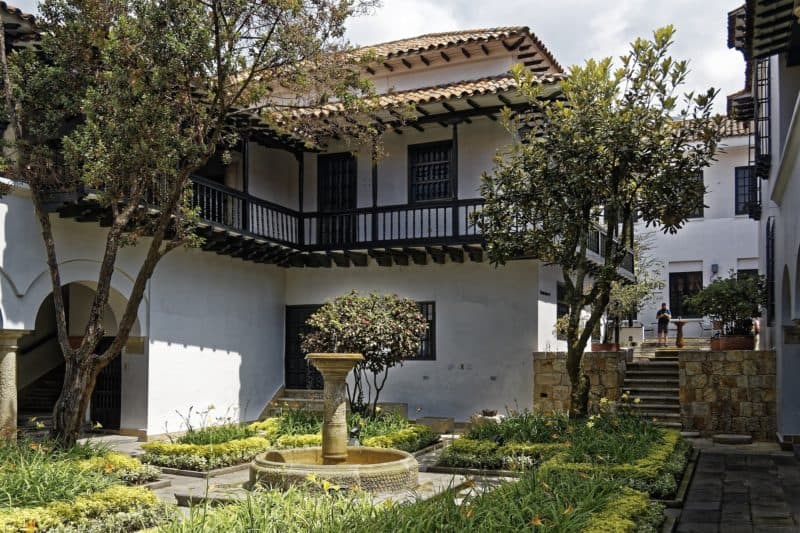
You don’t have to hold court like Louis XIV to have a courtyard. You just need to think outside the chateau.
7. Outbuilding Options
All those outbuildings for storage and livestock can do double duty as the back-drop for your very own courtyard style garden.
8. Vertical Panels
Cut to size cattle panels, fence posts and extra fencing, pallets, and other things you already have around the homestead can be used to make the other “walls” of your courtyard.
Even if your raw materials aren’t the most lovely, by the time you use your gardening skills to grow scarlet runner beans, cowpeas, or pollinator favorites like hummingbird vine (campsis radicans) over them, no one will ever know.
9. Living Walls
Similar to using espalier training to turn fruit trees into walls for your garden, you can use fast-growing, tall plants to create temporary courtyard spaces to enjoy in warm weather.
Willow is one of the most common materials used to create a living fence. It’s pliable, fast-growing, and doesn’t mind a little crowding of its roots.
But you can also grow dense thickets of artichokes to create an u-shaped or rectangularly shaped courtyard area. Your vertically grown hops or grapevines can also make a nice backdrop for a courtyard feel.
Bamboo, too, can make a wonderful option if you are willing to contain the roots and harvest the shoots to control the spread.
Cue the Cuttings

Ever wonder what to do with all your fruit tree trimmings (besides mulching them)? Why not work them into wattles?
10. Wattles
Wattles are so incredibly easy to make, it’s amazing to me that everyone doesn’t already have them. All you do is take your thickest cuttings and use your folding saw to cut them into stakes.
Stick the stakes a couple of inches in the ground about 6-10 inches apart. Then weave all your thinner more pliable trimmings back and forth over the stakes. Finally, trim off any off-shoots that are sticking out too much.
Voila! In just an hour or so you’ve turned your tree trimmings into fabulous French-inspired garden wattles. You can use these to make raised beds, to line pathways, to create the illusion of a flower basket, and more.
Go Geometric
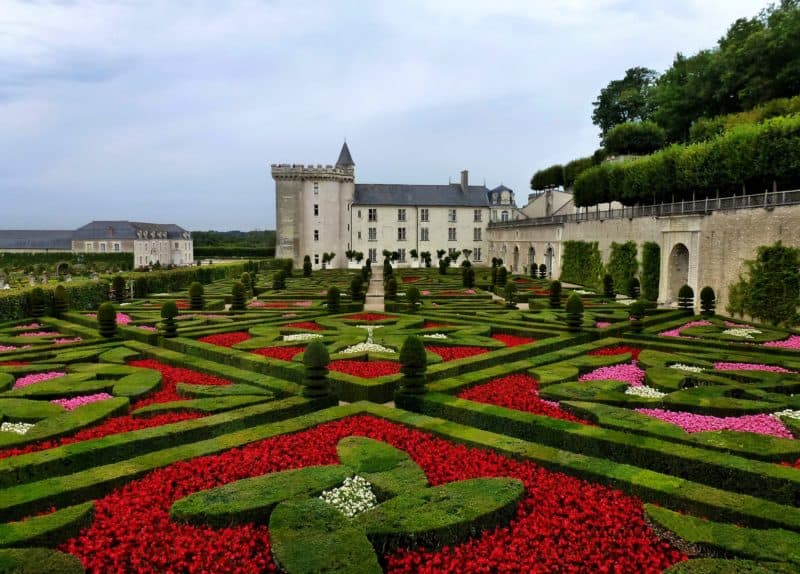
One of the key features of French gardens is their perfect geometry. Even when using flowing flowers like mophead hydrangea or peonies, there’s structure and balance to the layout. Crisp defined shapes and repetitive patterns make garden spaces feel intentional rather than haphazard.
11. Layout Your Lines
One of the easiest ways to add a sense of French order to a garden is to plant in perfectly straight lines. All you need is a string line, two stakes, a compass, and a ruler.
First, you use the stakes, string line, and compass to make sure all your lines follow the same trajectory. Then you use your ruler to space your plants evenly. It takes a few more minutes to plant straight lines, but it then makes it easier to hoe between your rows and cut down on your weeding time.
12. Repeat Patterns
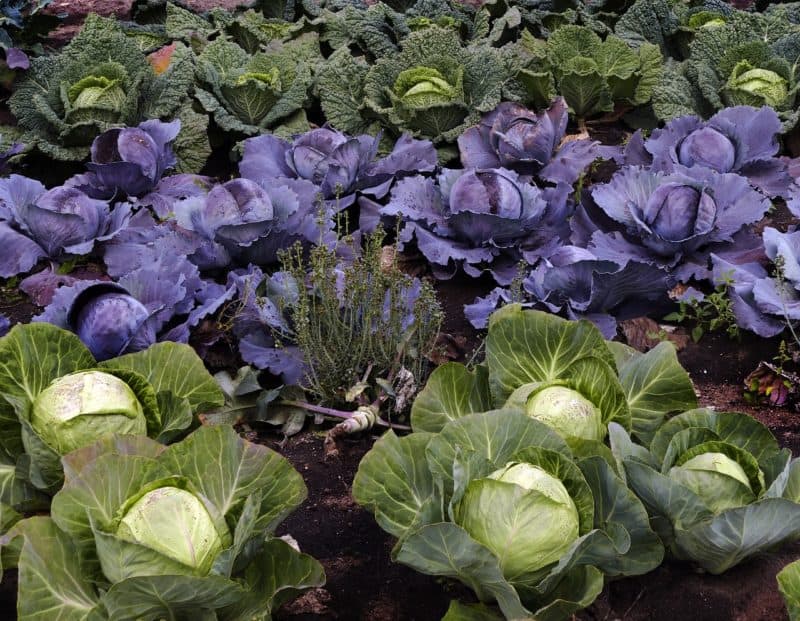
I love using interplanting for crop productivity. But if you want to create the look of a French garden, you need to group plants together in repeating patterns for a bigger impact.
For example, you might want to plant your patches of cabbage in equal numbers such as 4 x 4 heads in size. Then divide that area with a line of chives to break up your next patch of 4 x 4 cabbage heads. Repeat that pattern four times so you end up with four patches of 4 x 4 heads for repeating symmetry.
13. Pattern Your Potager
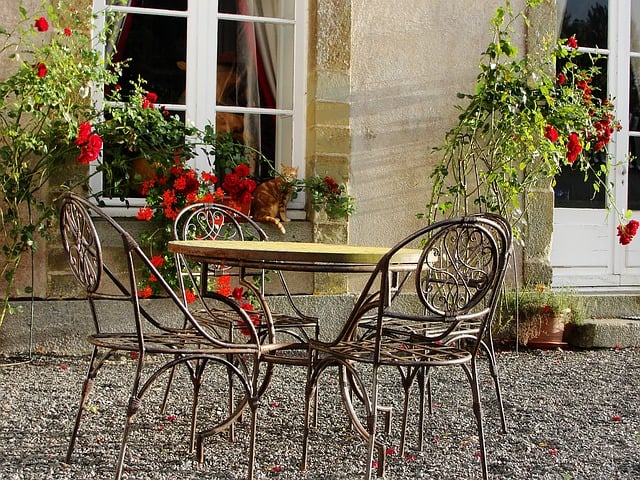
Now, using lines and repetitive patterns is great for producing lots of staple crops. But, if you are growing a continuous harvest potager garden, you’ll need a different approach. In potagers, the geometry is often achieved using hardscaping and plant scaping.
You may want to use raised beds laid out in an obvious repeating pattern. Or, you may want to orient your garden around a feature such as a water fountain or circular seating area.
Dedicated paths made with gravel or stonework create structure even when your plants are at various stages of growth. Using matched potted plants in the corners of beds also emulate plant patterning.
Hedging your less structured growing areas with perfectly pruned herbs or other perennials also brings order to your more chaotic seasonal vegetables.
French-Inspired Homestead Elegance
Anyone who homesteads knows the reality never really looks like the portraits of simplicity staged and put up on most blog posts. Yet, by devoting a little extra effort and time to creating areas of order in between the chaos, we bring reverence to the mundane.
